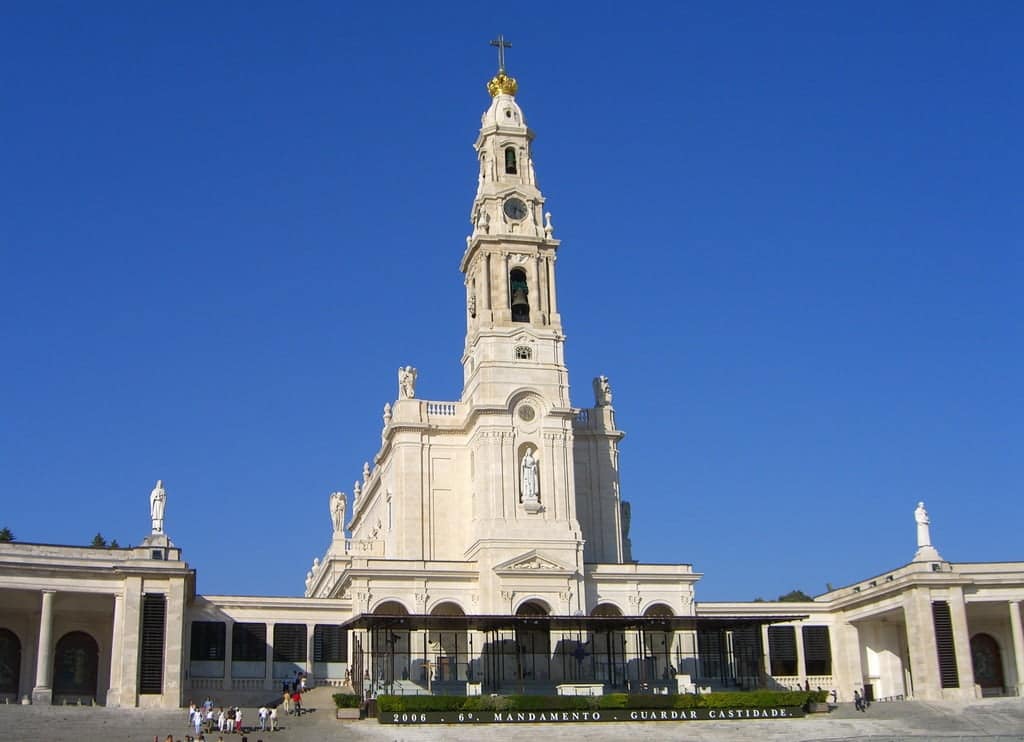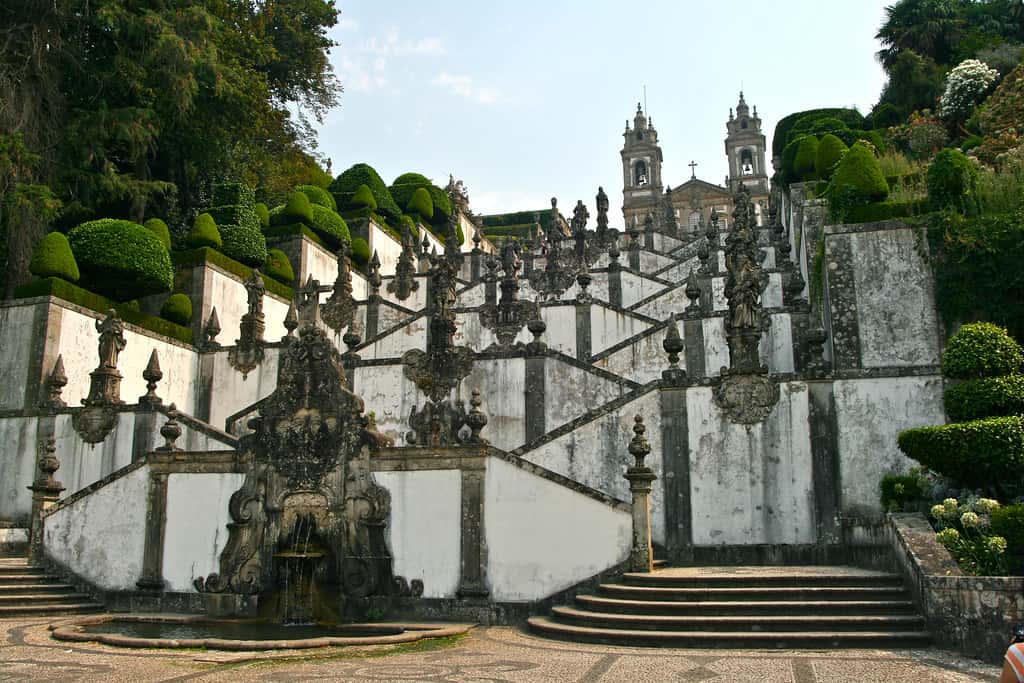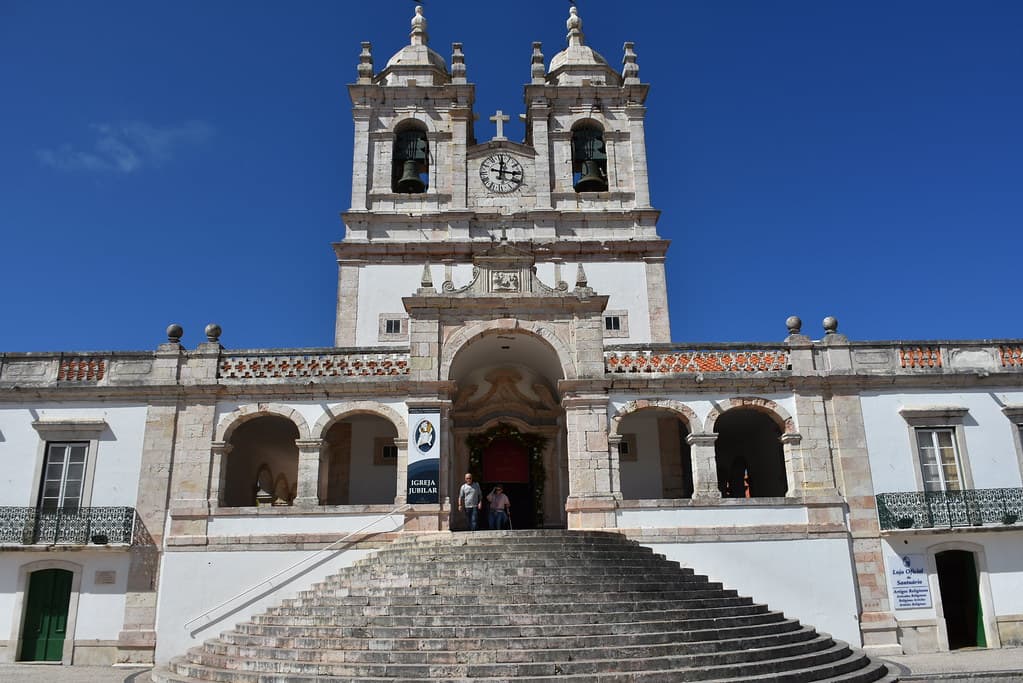
Pilgrimages have been a practice that has accompanied humanity throughout the centuries. They offer a space for reflection, spiritual seeking, and strengthening of faith. But what motivates millions of people to walk long distances to sacred shrines?
The story of the pilgrimage to Fátima and its connection to the Camino de Santiago is a testament to how these journeys are both physical and deeply spiritual.
As specialists in Santiago Camino travels, we invite you to discover the routes leading to this important religious destination and how these journeys even intertwine with the Camino de Santiago. Without a doubt, all of these create a bridge between two of the most significant places in Catholic tradition.
Another alternative is to end your trip in Santiago de Compostela and from here we can take you on an organized trip by car and guide to Fatima and other cities in Portugal such as Porto and Lisbon.
Índice de contenidos
History of the pilgrimage to Fátima
The history of the pilgrimage to Fátima dates back to the apparitions of the Virgin Mary to three shepherd children: Lucía dos Santos, Francisco, and Jacinta Marto, in 1917.
These events took place in Cova da Iria, Portugal, where the Virgin asked them to return on the 13th of each month for six months. During these apparitions, she delivered messages of conversion, prayer, and penance, as well as three secrets that have been the subject of interpretation and devotion.
The climax of these apparitions occurred on October 13, 1917, with the famous “Miracle of the Sun“, witnessed by around 70,000 people. This phenomenon attracted worldwide attention and solidified Fátima as an important centre of Catholic faith. Devotion grew rapidly. In 1930, the Catholic Church officially recognised the apparitions, allowing for the worship of Our Lady of Fátima.
Since then, millions of pilgrims visit the Sanctuary of Fátima each year, especially on May 13 and October 13. Visitors take part in Masses, processions, and rituals such as the “kneeling path“, which symbolises their devotion and search for spiritual healing.
The story of Fátima inspires faithful people worldwide, becoming a symbol of hope and faith for many communities.
The different routes to Fátima
For many, undertaking a pilgrimage to Fátima is a transformative spiritual journey that combines history, faith, and contact with nature. There are several routes that allow pilgrims to reach this sacred destination, each with its unique charm.
In this context, there is also a special connection between the pilgrimage to Fátima and the Camino de Santiago. They are two routes that share not only spirituality but also a spirit of adventure and personal discovery. Thus, some pilgrims combine both experiences to deepen their spiritual journey.
Camino del Tajo
One of the most frequented routes to Fátima is the Camino del Tajo, which starts in Lisbon and follows the course of the Tagus River, one of the most important rivers in the Iberian Peninsula.
It is even more accessible in terms of distance and effort than the Camino de O Cebreiro to Santiago. Along this six-stage route, pilgrims can enjoy the rural beauty of Portugal, passing through picturesque villages, fields, and hills that allow them to disconnect from urban hustle.
Additionally, Lisbon can also be a starting point for the Camino Portugués to Santiago, so many pilgrims take the opportunity to begin both pilgrimages here. This option becomes a unique opportunity for those who wish to visit two important places of Catholic devotion in one trip.
Along the way, it is possible to observe various migratory birds nesting near the river, especially in the Lezíria Natural Reserve. Many pilgrims also make a stop at the Santuário de Cristo Rei in Almada, where a panoramic view of Lisbon can be enjoyed.
The route also invites pilgrims to discover local wines at small family-owned wineries offering tastings, an experience that combines spirituality and Portuguese winemaking tradition.
Camino del Norte

Another popular alternative is the Camino del Norte, which connects cities in northern Portugal, such as Porto and Braga, with the sanctuary of Fátima. This route is less travelled, similar to the Complete Primitivo Camino, making it an excellent option for those seeking moments of introspection and peace during their journey.
As in the previous case, Porto is a perfect starting point for those interested in starting the Camino Portugués. From here, pilgrims can head towards Fátima or Santiago, enriching the spiritual experience and enjoying mountainous landscapes and Portuguese hospitality.
Here, pilgrims can explore the historic city of Braga, known as the “Rome of Portugal” due to its numerous temples and monasteries. This city is famous for the Santuário do Bom Jesus do Monte, an architectural and scenic complex that impresses with its monumental baroque staircase and symbolic fountains.
Likewise, pilgrims can also enjoy the route through vineyards and olive groves, where artisanal olive oils and wines are produced.
Camino de Nazaré

For those seeking a coastal route, the Camino de Nazaré offers the possibility to combine spirituality with the charm of Portugal’s seaside towns. Nazaré is known for its beaches and fishing tradition, and it has also become a starting point for pilgrimages to Fátima.
The Camino de Nazaré has a special feature: pilgrims can make a stop at the Sanctuary of Our Lady of Nazaré. According to legend, the Virgin intervened in the miraculous rescue of a knight in the 12th century. This town is also famous for its giant waves and is an iconic destination for surfers worldwide, which adds a unique tourist appeal.
Along the way to Fátima, pilgrims can enjoy the rich coastal cuisine and admire breathtaking cliffs offering unrivalled views of the Atlantic Ocean, much like the experience on the Camino de Finisterre.
Cultural and tourist aspects
Pilgrimages to Fátima and Santiago are not only spiritual journeys; they also promote religious and cultural tourism in Portugal and Spain.
Visitors have the opportunity to experience the rich local cuisine, characterised by traditional dishes that reflect regional customs. Pasteis de nata in Lisbon, fresh seafood in Nazaré, or Galician tapas near Santiago are some of the most popular culinary offerings.
Additionally, local festivals often coincide with the busiest times of the year. Participating in these celebrations offers a deeper understanding of local cultural traditions. Likewise, it is a perfect opportunity to connect with fellow travellers.
The impact of both pilgrimages on personal and spiritual life
The combination of visiting Fátima and Santiago can have a significant impact on a pilgrim’s personal and spiritual life. Many report that this journey helps them strengthen their faith and personal commitment. The experiences gained during these travels allow them to reconcile with their spirituality and personal values.
Testimonies collected from pilgrims highlight how these journeys have transformed their everyday lives. Some mention finding inner peace after years of emotional struggle. Others reveal how they have renewed their commitment to their faith after visiting these sacred places.
Tips for planning a combined pilgrimage to Fátima and Santiago
If you’re interested in undertaking a combined pilgrimage, here are some practical tips to follow:
- Best time of year: just like on the Camino Inglés to Santiago, spring (April-June) and autumn (September-October) are ideal for avoiding excessive crowds and enjoying the mild weather. We also provide more information about the Camino Inglés
- Physical preparation: it’s recommended to train before your trip to be prepared for long daily walks.
- Essential gear: bring comfortable footwear, clothing suitable for changing weather conditions, and a light backpack. This will allow you to fully enjoy the journey.
- Logistics: plan your daily stages carefully. Allow time for rest and to interact with other pilgrims.
- Documents: upon completing both paths, you will be able to obtain certificates from each location as tangible mementos of your experience.
Both pilgrimages offer a physical journey as well as a profound opportunity for spiritual growth. The connection between Fátima and Santiago highlights how these traditions have endured over time. They also provide hope and inspiration if you are seeking answers on your personal path to God.









